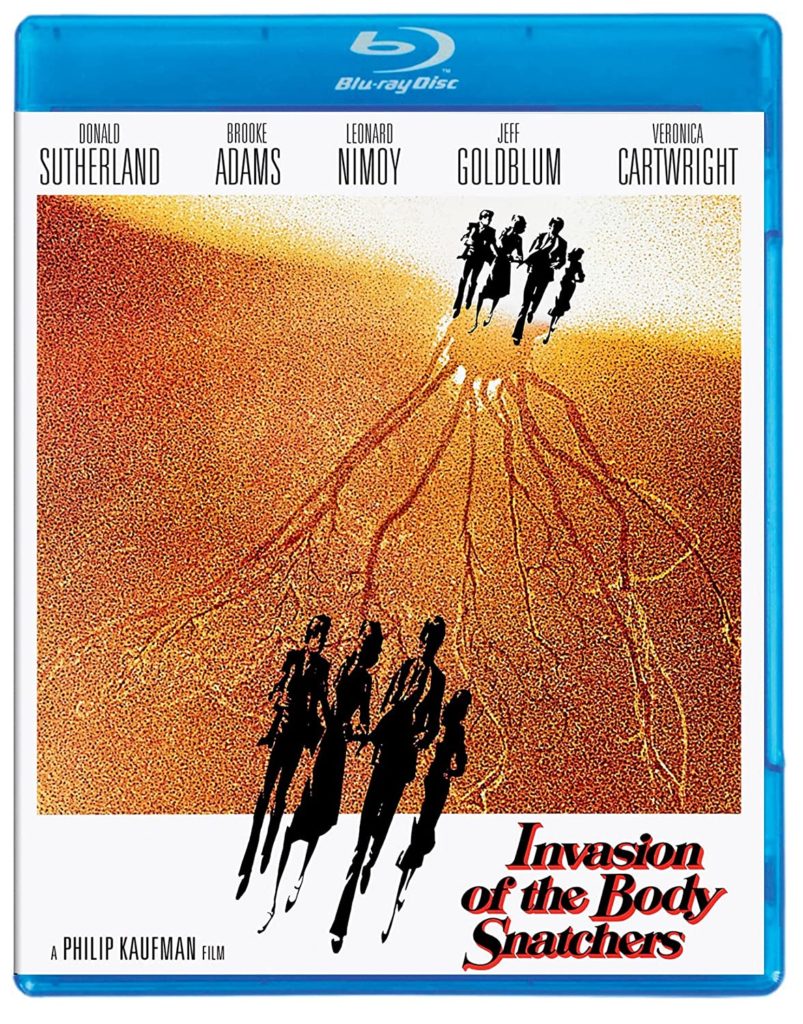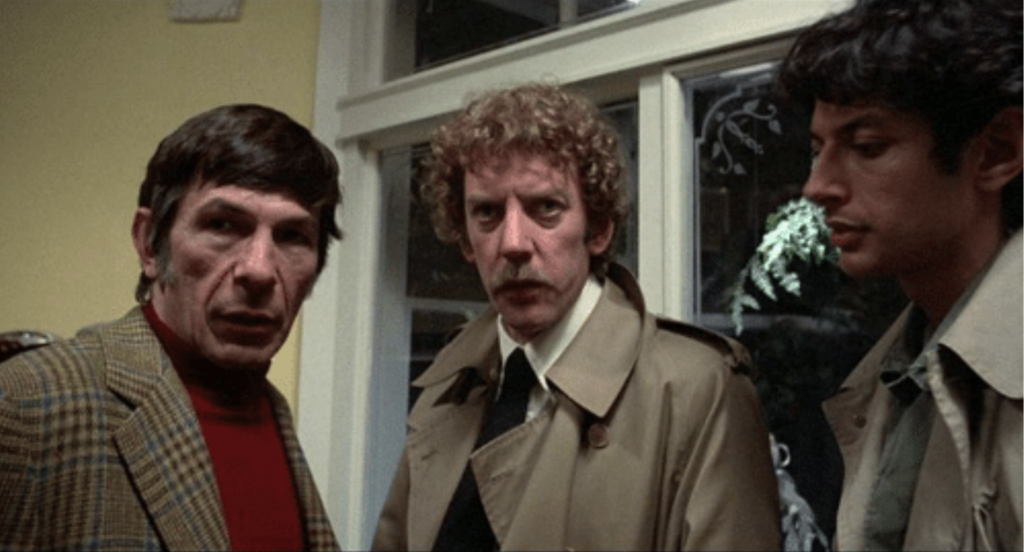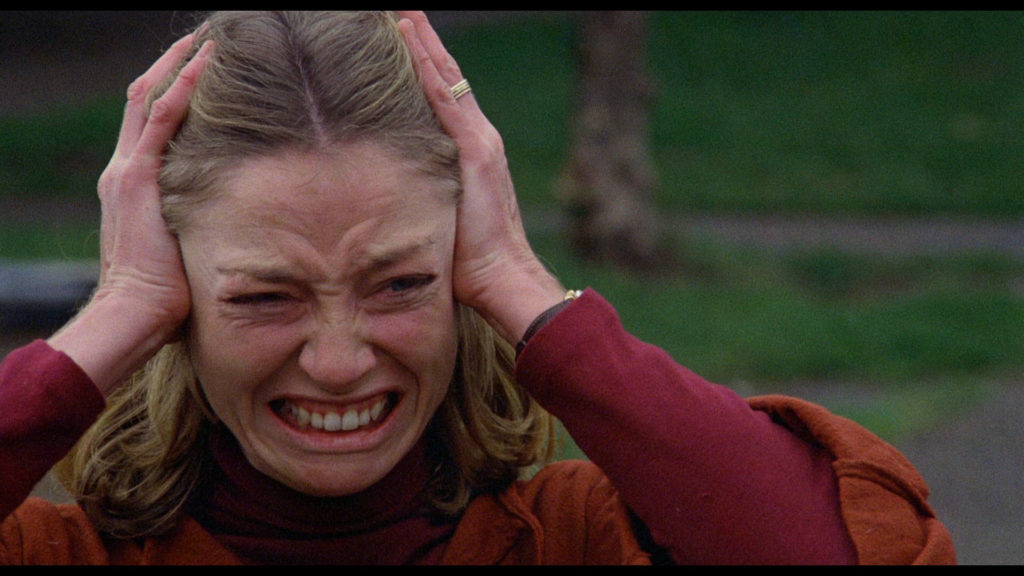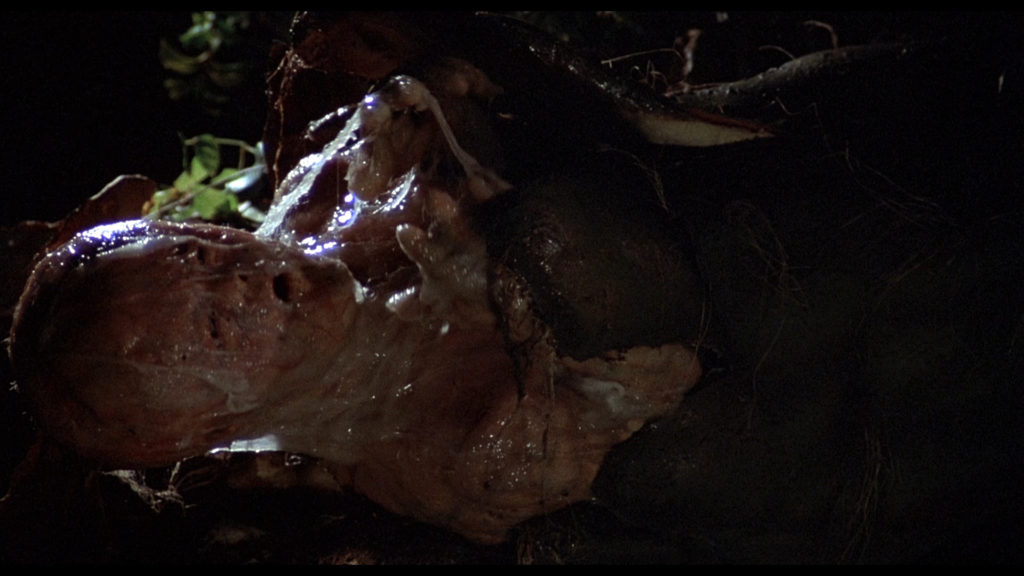What’s To Be Done With These Parallax Potatoes?
DIRECTED BY: PHILIP KAUFMAN/1978
STREET DATE: FEBRUARY 1, 2022/KINO LORBER STUDIO CLASSICS

The 1956 original was also more serious-minded than its hokum sci-fi title, but this one’s outgrown the moniker to the point that the experience is like ripping a bubblegum wrapper off a psychology tome. It ports over from the original book by Jack Finney and the original film by Don Siegel the general premise of a gelatinous goop dropping out of space and growing pods that squeeze out copies of whoever is nearby. Soon a whole town – San Francisco in this remake – is made over, the originals all turned to dust and escorted into oblivion by trash trucks like a blue-collar Charon. That is, everybody but our clever heroes, who, in sequence, figure it out, call out the authorities on it, blend cleverly into it, and then fall prey to it – a juicy allegory on the many ways we fight and lose to the siren song of group think.
The original is refreshingly sober amidst the flotsam of the usual ‘50s sci-fi landscape, but never really frightening. Here, though, director Philip Kaufman throws every cinematic trick at the premise to keep us off balance throughout: canted angles, fish-eye push-ins, clattering musical score (by Danny Zeitlin), random, somewhat meaningless cutaways that beg interpretation where there is none, strange ellipses that leave us piecing together what should be obvious, walking hand-held shots for no particular reason… But none of it is programmatic – it puts us in a genuinely unsettled state of mind from the start, descending alongside the characters into a burrowing trench of paranoia.
It helps that filmmaking of the ‘70s allowed for the existence of oily faces and ill-fitting clothes – something about the general quality of film stock for middle-budget pictures left so much of the sweatiness of normal life to become de rigueur behind the grain. It’s what made the ‘70s the perfect decade for disturbed stories of secret cabals and shadow governments and general assumptions of powers beyond any lone everyman’s control. As such, Invasion fits perfectly into that clutch of paranoid thrillers that stretched across the ‘70s – Klute (1971), The Conversation (1974), The Parallax View (1974), Winter Kills (1979), The Thing (1982). That last one’s a cheat – not the ‘70s – but could be the perfect double for Invasion, both taking the typical “can I even trust my friends?” and twisting it cynically into “are these even my friends?” And both are films whose thematic weight often outdoes the actual unfolding plot – we’re more intrigued by the feeling in our guts that this alien body-swap might’ve happened to actual loved ones of late than we necessarily are with how the fictional characters get out of this one alive.

That said, we do come to like these earnest characters in their dawning sense of helplessness. Donald Sutherland brings his dry, brooding, occasionally flip charm to the mystery, looking every bit like Kurt Vonnegut’s doodle of himself, while Jeff Goldblum is fun as a neurotic writer, nattering away in his nascently Goldblumian way, the stuttering ad-libber with furrowed brow. Then enters post-Original Series Leonard Nimoy, flaunting sideburns and copious tweed as a famous psychologist on hand to explain away the alien dilemma as just another mass psychosis, until of course he’s part of the problem. It’s a joy to watch these three particular ‘70s men walking around the screen, their long, narrow faces complementing each other like a trio of urgent Easter Island statues. It’s also fun to weep for poor Veronica Cartwright, here playing Goldblum’s wife, someone who must look on helplessly as those she loves are unceremoniously hijacked as organic birth husks for an alien manifestation – just as she does a year later in yet another sci-fi dollop of horror-paranoia, Alien (1979). In the spirit of cinematic continuity, one must assume she’s also Antarctic Kurt Russell’s girlfriend back home.

This Kino Lorber disc is entirely ported over from the 2016 Scream Factory release, including all of the copious extras – interviews with key players, writers, and technicians; commentary by Philip Kaufman; second commentary by film historian Steve Haberman, etc. One could say it is the same disc, only colonized, replicated, and put into a new skin, if one wanted to draw a subtly meta relationship between the two. That sameness aside, the film is one of the great ‘70s sci-fi movies, using the older version’s template to irritate an already Watergate-soaked sense of national anxiety, and like the original, leaving us in a place by end credits that feels not so much like resolution as it does confirmation of our worse fears.

Images courtesy of DVDBeaver.com.

